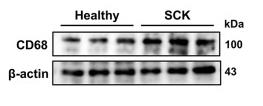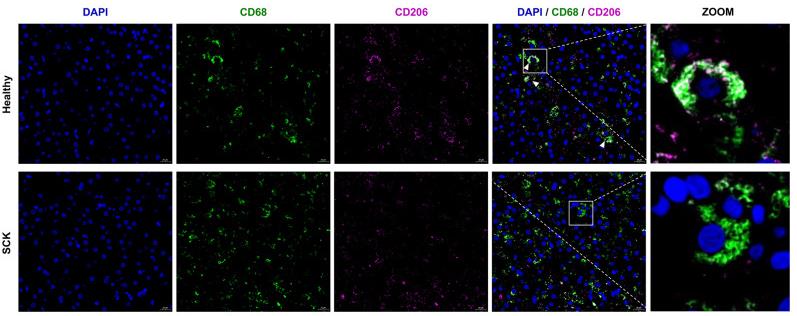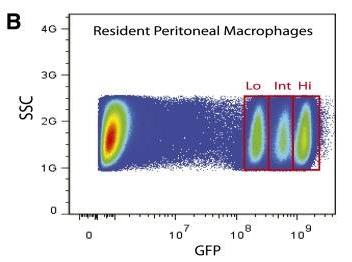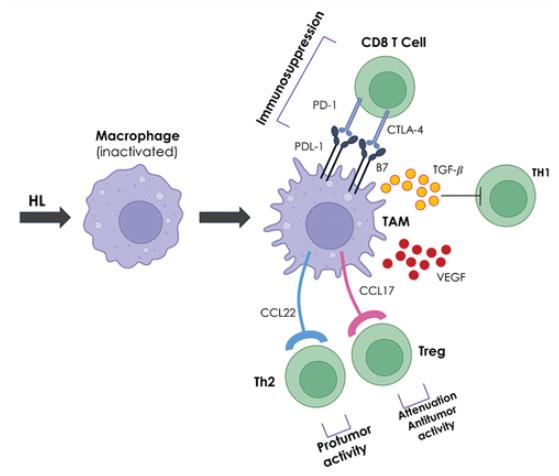Recombinant Human CD68 protein(Met1-Ser319), His-tagged
| Cat.No. : | CD68-7312H |
| Product Overview : | Recombinant Human CD68 was expressed in Insect Cells, with a C-terminal polyhistidine tag. |
- Specification
- Gene Information
- Related Products
- Case Study
- Application
- Download
| Species : | Human |
| Source : | Insect Cells |
| Tag : | His |
| Protein Length : | 1-319 a.a. |
| Form : | Lyophilized from sterile 20mM Tris, 500mM NaCl, pH 7.4, 10% gly. Normally 5 % - 8 % trehalose, mannitol and 0.01% Tween80 are added as protectants before lyophilization. |
| Molecular Mass : | The secreted recombinant human CD68 consists of 309 amino acids and predicts a molecular mass of 32.99 KDa. The apparent molecular mass of the protein is approximately 68 Kda in SDS-PAGE under reducing conditions due to glycosylation. |
| Endotoxin : | < 1.0 EU per μg of the protein as determined by the LAL method |
| Purity : | > 98 % as determined by SDS-PAGE |
| Storage : | Samples are stable for up to twelve months from date of receipt at -20°C to -80°C. Store it under sterile conditions at -20°C to -80°C. It is recommended that the protein be aliquoted for optimal storage. Avoid repeated freeze-thaw cycles. |
| Reconstitution : | It is recommended that sterile water be added to the vial to prepare a stock solution of 0.2 ug/ul. Centrifuge the vial at 4°C before opening to recover the entire contents. |
| Gene Name | CD68 CD68 molecule [ Homo sapiens ] |
| Official Symbol | CD68 |
| Synonyms | CD68; CD68 molecule; CD68 antigen; macrosialin; DKFZp686M18236; GP110; LAMP4; macrophage antigen CD68; SCARD1; scavenger receptor class D; member 1; scavenger receptor class D, member 1; |
| Gene ID | 968 |
| mRNA Refseq | NM_001040059 |
| Protein Refseq | NP_001035148 |
| MIM | 153634 |
| UniProt ID | P34810 |
| ◆ Recombinant Proteins | ||
| RFL4625HF | Recombinant Full Length Human Macrosialin(Cd68) Protein, His-Tagged | +Inquiry |
| CD68-3018HF | Recombinant Full Length Human CD68 Protein | +Inquiry |
| CD68-3103M | Recombinant Mouse CD68 Protein | +Inquiry |
| Cd68-6733M | Recombinant Mouse Cd68 protein, His-GST-tagged | +Inquiry |
| CD68-0842H | Recombinant Human CD68 Protein, GST-Tagged | +Inquiry |
| ◆ Cell & Tissue Lysates | ||
| CD68-2291HCL | Recombinant Human CD68 cell lysate | +Inquiry |
| CD68-001HCL | Recombinant Human CD68 cell lysate | +Inquiry |
| CD68-1362RCL | Recombinant Rat CD68 cell lysate | +Inquiry |
Case 1: Zhao B, et al. J Dairy Sci. 2024
In dairy cows with subclinical ketosis (SCK), unnoticed liver damage is linked to immune imbalance. This study found that SCK cows have increased liver inflammation and damage, with more of the pro-inflammatory M1 macrophages compared to healthy cows, who have more M2 macrophages that help reduce inflammation. This shift explains the higher risk of liver issues such as fat accumulation and fibrosis in SCK cows.

Fig1. Hepatic protein levels of Cluster of Differentiation 68 (CD68) in healthy (n = 6) and SCK (n = 6) cows.

Fig2. Representative images (scale bar = 20 μm) of immunofluorescence for CD68 (green).
Case 2: Iqbal AJ, et al. Blood. 2014
We've developed a special mouse model to study how monocytes move to inflammation sites and turn into macrophages. This mouse expresses a green fluorescent protein (GFP) that helps us track these cells, thanks to the human CD68 promoter. Unlike similar models, our CD68-GFP monocytes keep glowing even after becoming macrophages for up to 72 hours during inflammation resolution. This makes it easier to follow their journey and roles in both acute and chronic inflammation studies, offering valuable insights into immune responses.

Fig1. Three GFP resident macrophages populations (GFPhi, int, lo) from a pool of 10 CD68-GFP mice were sorted on the basis of GFP expression.

Fig2. CD68-GFP and WT mice were injected intraperitoneally with 100 µg zymosan.

Fig1. Macrophages interaction with T-cells. (Valeria Tomarchio, 2024)
Not For Human Consumption!
Inquiry
- Reviews (0)
- Q&As (0)
Ask a Question for All CD68 Products
Required fields are marked with *
My Review for All CD68 Products
Required fields are marked with *



